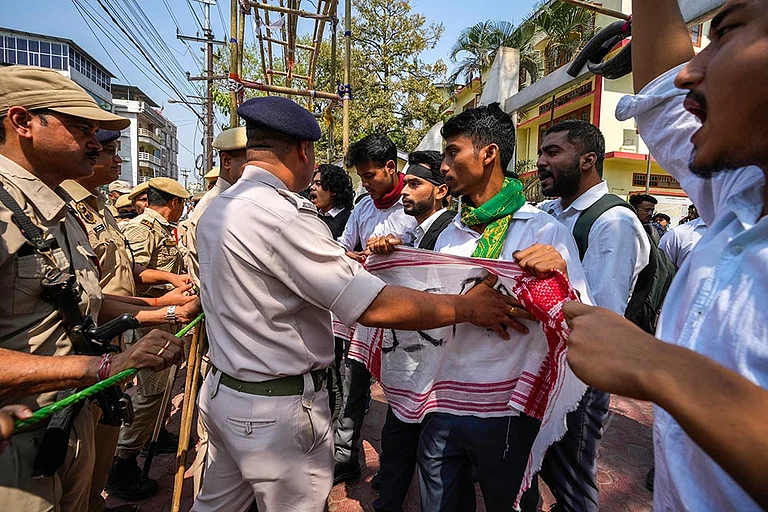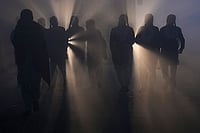Siachen is not a battle on a grand scale. As the author explains, at the cutting edge of the war is a section of 8 or 10 men holding on to an iced-up bunker at 21,000 feet against the numbers the enemy can organise at the end of his stretched logistic chain. Simply being on the mountain at that altitude demands strong reserves of self-discipline and character. To fight and give one’s life, unseen and unknown, on the roof of the world requires a level of motivation that is heroic. Is Siachen worth the loss of such gallant lives? Obviously not, the author concludes, but the failure to disengage from Siachen has not been for want of trying. In the first few years, the drive to militarise the glacier came from the as-yet unproved strategic implications of a giant Sino-Pakistani pincer to take Ladakh, matching Pakistani fears from an imagined Indo-Soviet pincer to isolate the Northern Areas.
Both sides have now matured beyond their irrational fears, but peace is still elusive and the reasons Raghavan gives for the failure of the peace talks are what takes the book into a most satisfying analytical area. The political-military interface in all countries is fairly blurred, and India is no exception. Young officers in the army accuse their seniors of having drawn a line on a map and then ordered them to defend it, when it makes no military sense and is poor strategy to boot. The seniors blame the government for giving them no operational latitude to fight a war of manoeuvre. The defence ministry (sans Fernandes) bumbles along with peacetime procedures when lives are being lost on the glacier for want of high-quality stores and equipment. But above all the Siachen peace process is held up because the Pakistan army lied to their people that they were fighting on the glacier when they never got anywhere near it. A ceasefire, truce or pull-back can only begin from a start line and an agreement, naturally, will expose this 12-year-old lie.
After 1991, the Siachen talks became hostage to the Kashmir militancy programme, and lately to the reluctance of both armies to withdraw from a line which has cost so many lives. But Raghavan has answers, slow though they may be. A ceasefire in place with no movement by either side for three years, so as to remove Siachen from the South Asian subconscious is the first step. Disengagement and a pull-back, an implausible step in the present political context, may not be so far-fetched three years from now. Should India have got into Siachen, or rather the Saltoro ridge at all? There is now evidence that if India didn’t, the Pakistanis would have done a ‘Kargil’ in the spring of 1984. In fact the Pakistani ‘strategy’—if it can be called that—at Kargil seems to have been an unimaginative copycat operation of Siachen, situated in entirely different circumstances, by possibly the same author. Lurking everywhere is Brigadier and later Major-General Abbasi, notorious in Delhi as the Pakistani DA, rogue general who got all his men killed in Siachen, attempted a coup against Benazir and was finally court-martialled and cashiered by the Pakistan army.
Since 1948 there are probably a half-dozen books that have come from the army that could find permanent places in any library. From Thimmayya to Monty Palit’s outstanding War in the High Himalayas, and later to Jacob’s interpretation of the war in Bangladesh and Hoon’s controversial narrative of Brass Tacks, these are some that come to mind. Raghavan’s book on Siachen sets a high standard for an increasing bunch of military authors to set their sights at. This is a sober, reasoned and analytical book that doesn’t fight shy of looking at why wars are fought. Soldiers cause so few of them.






















